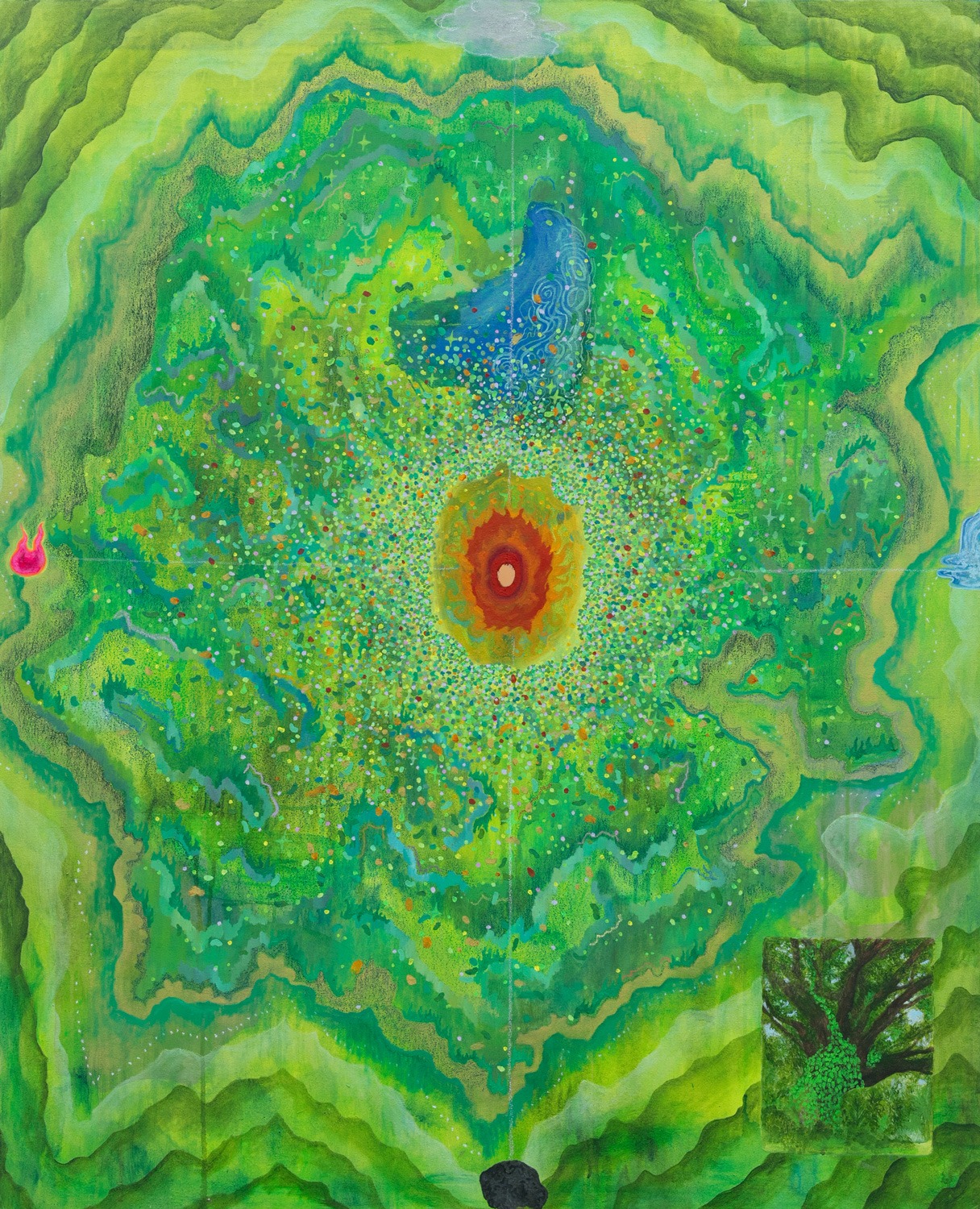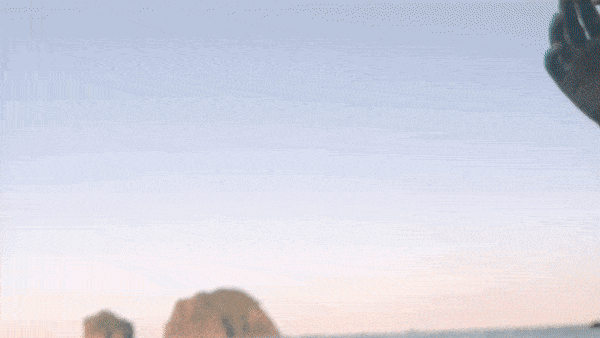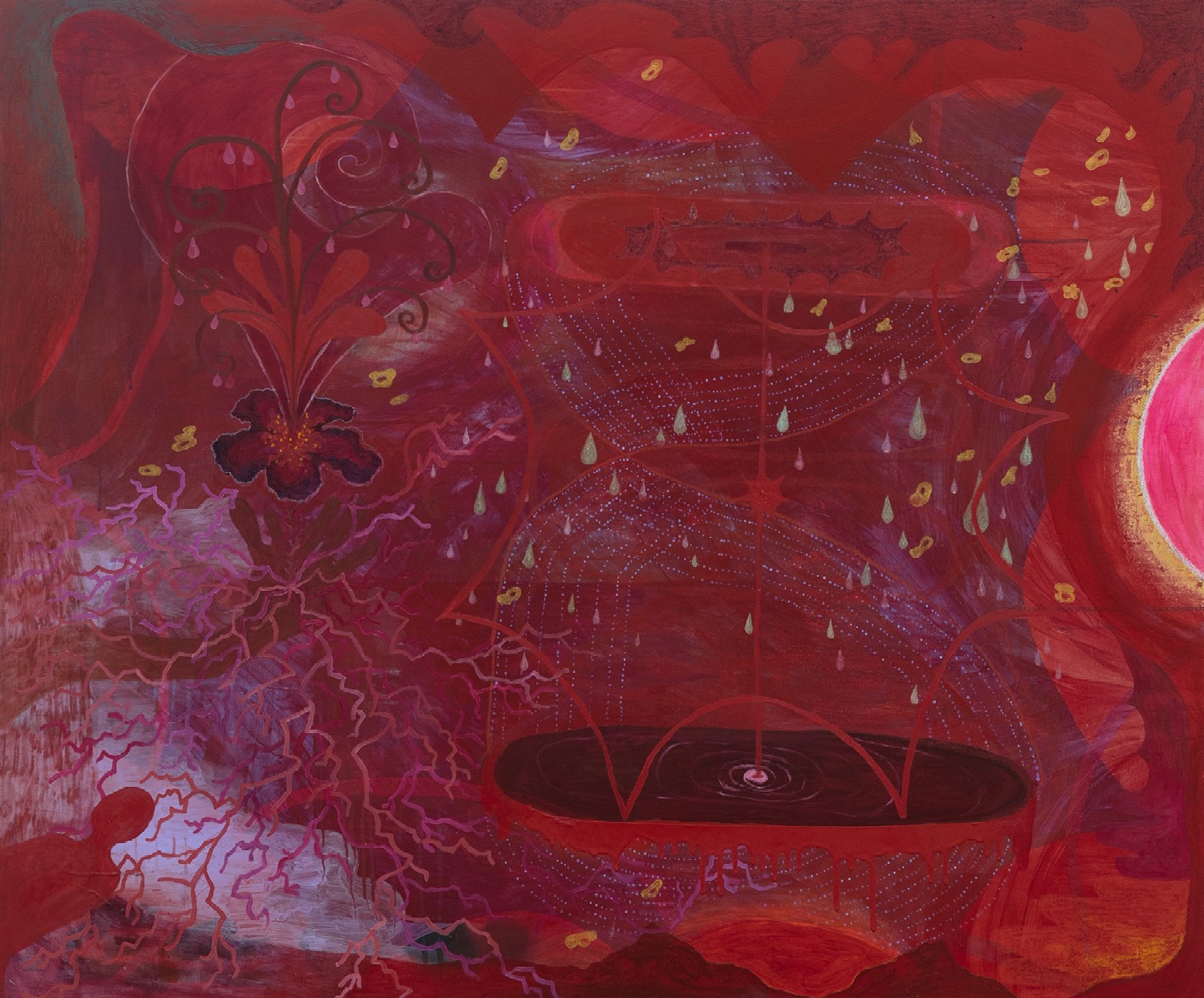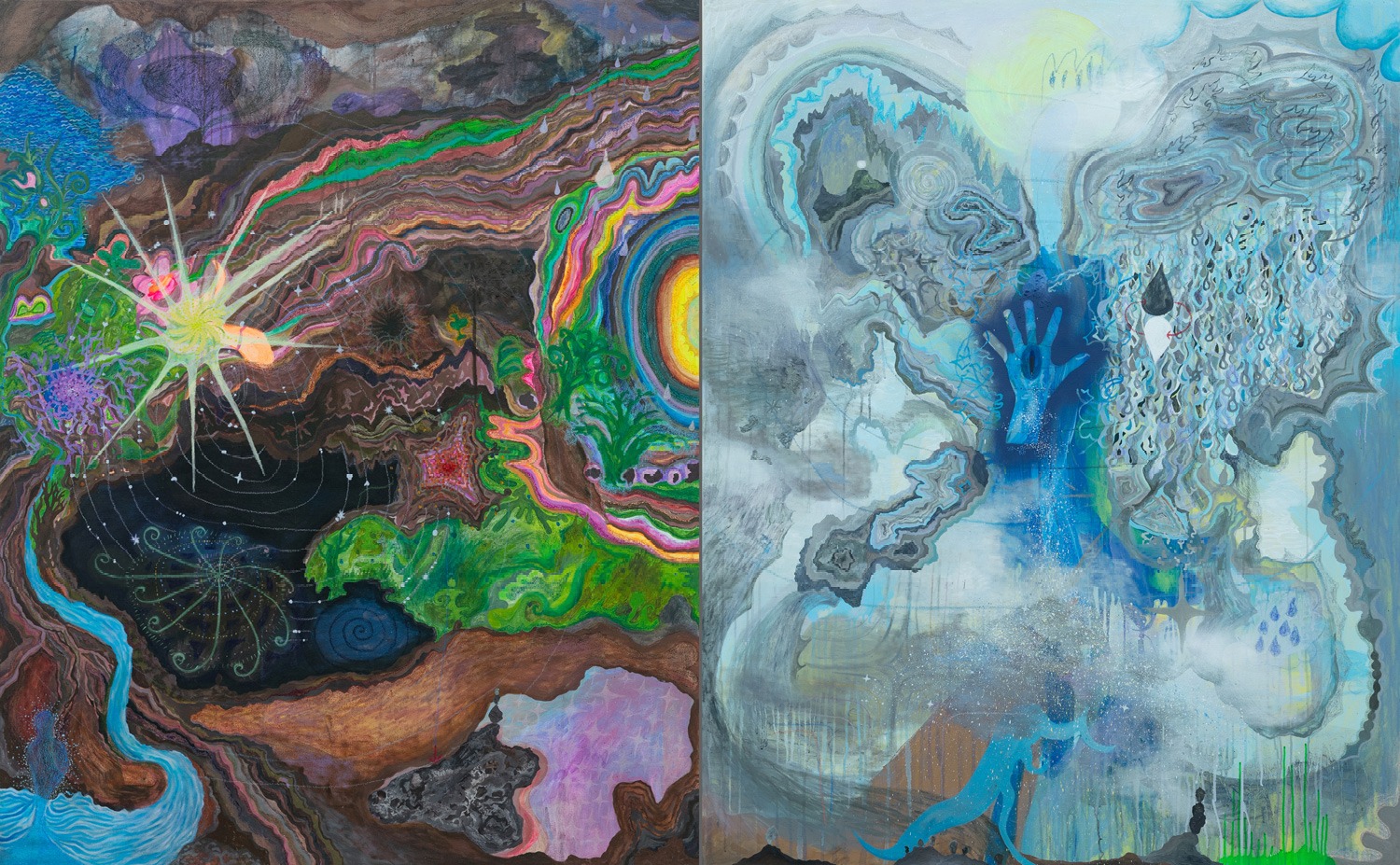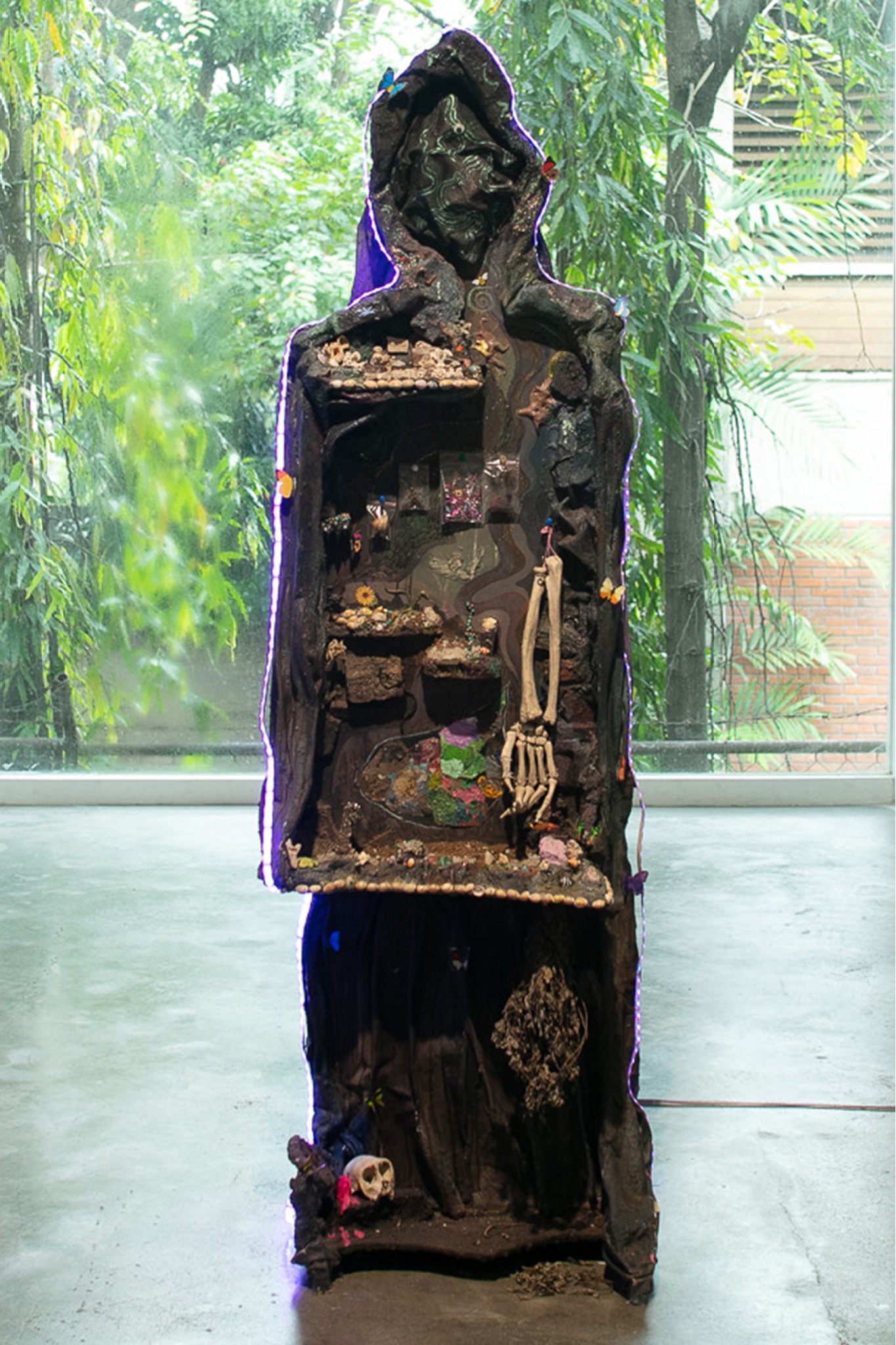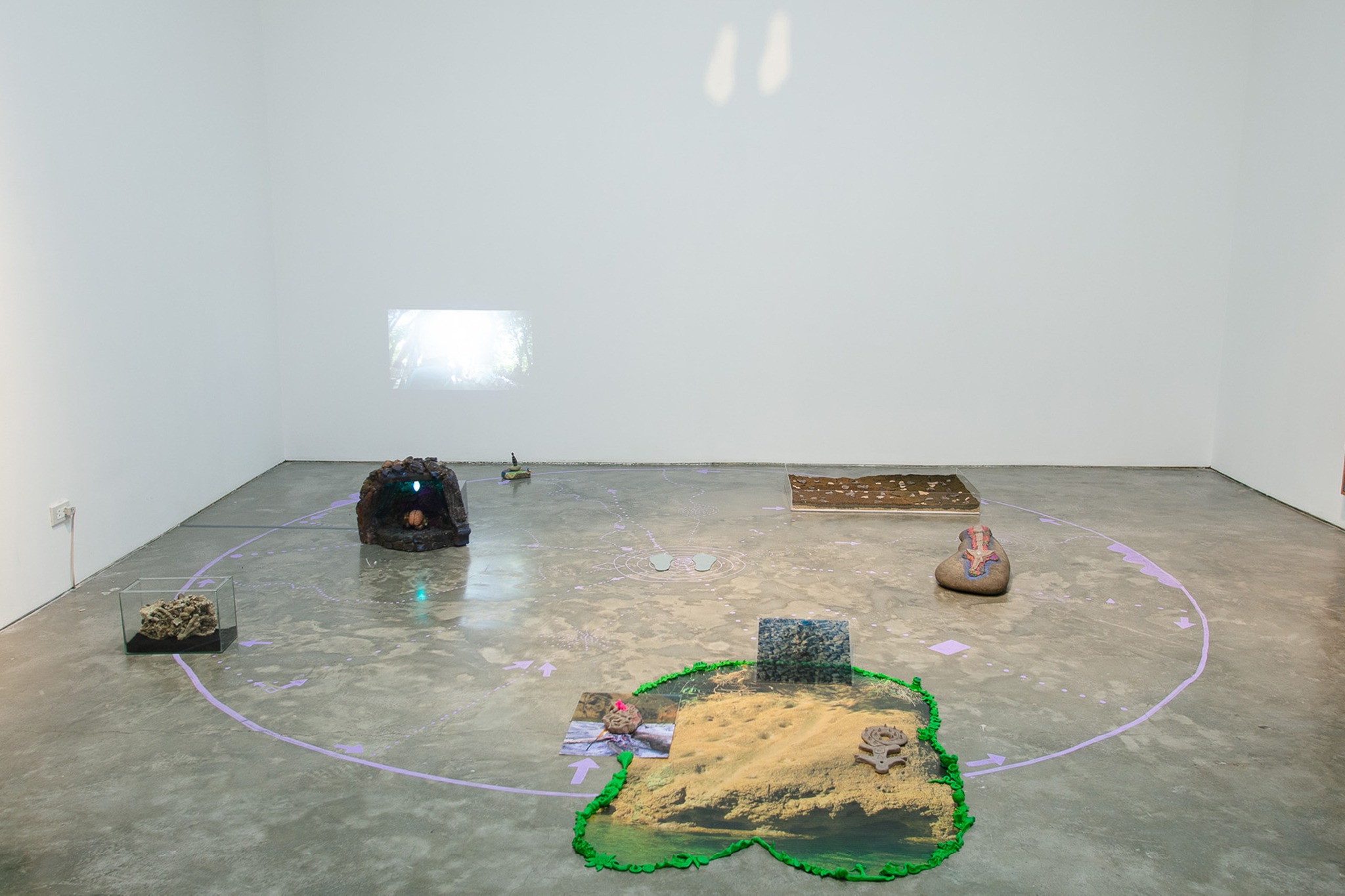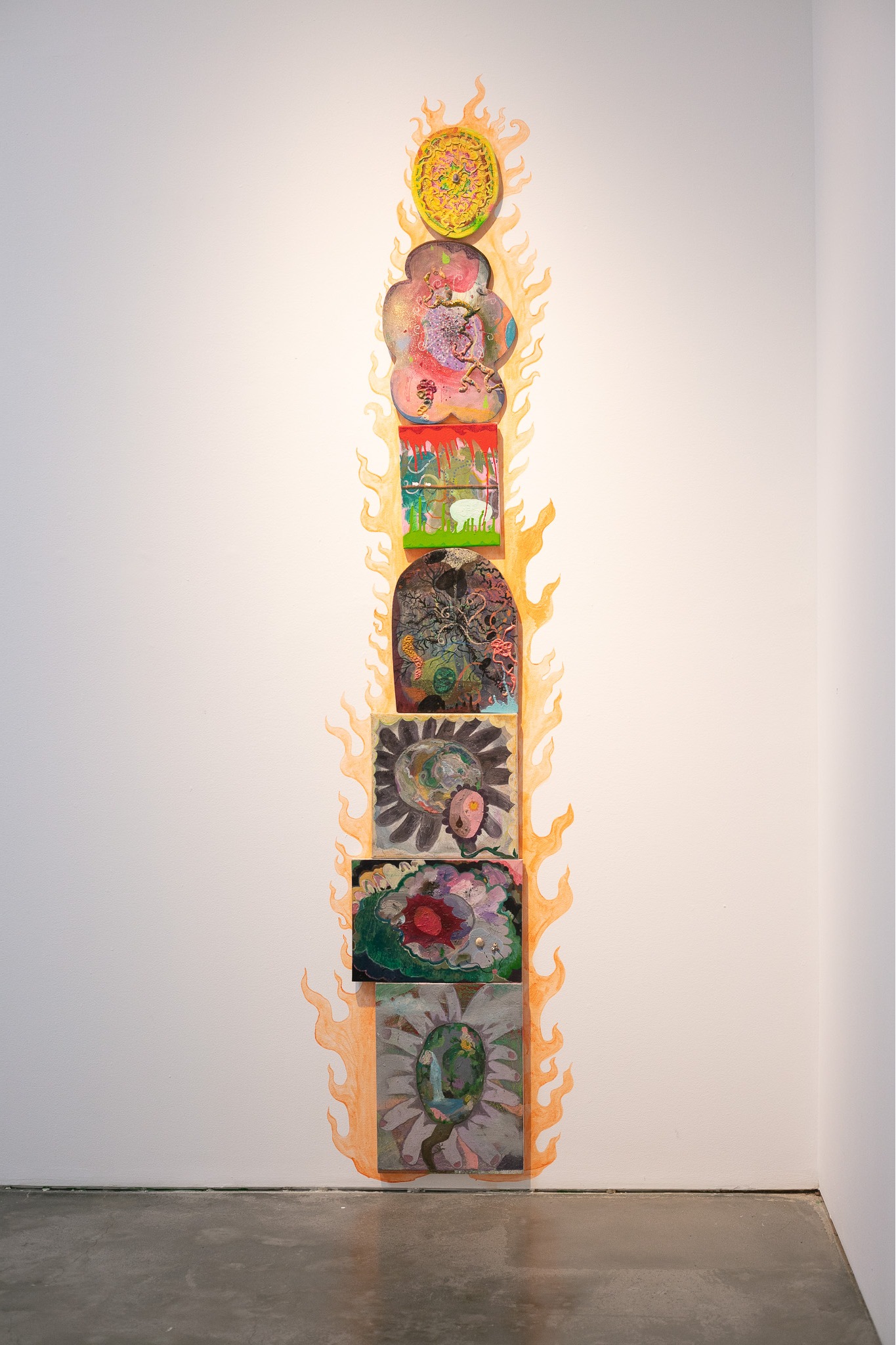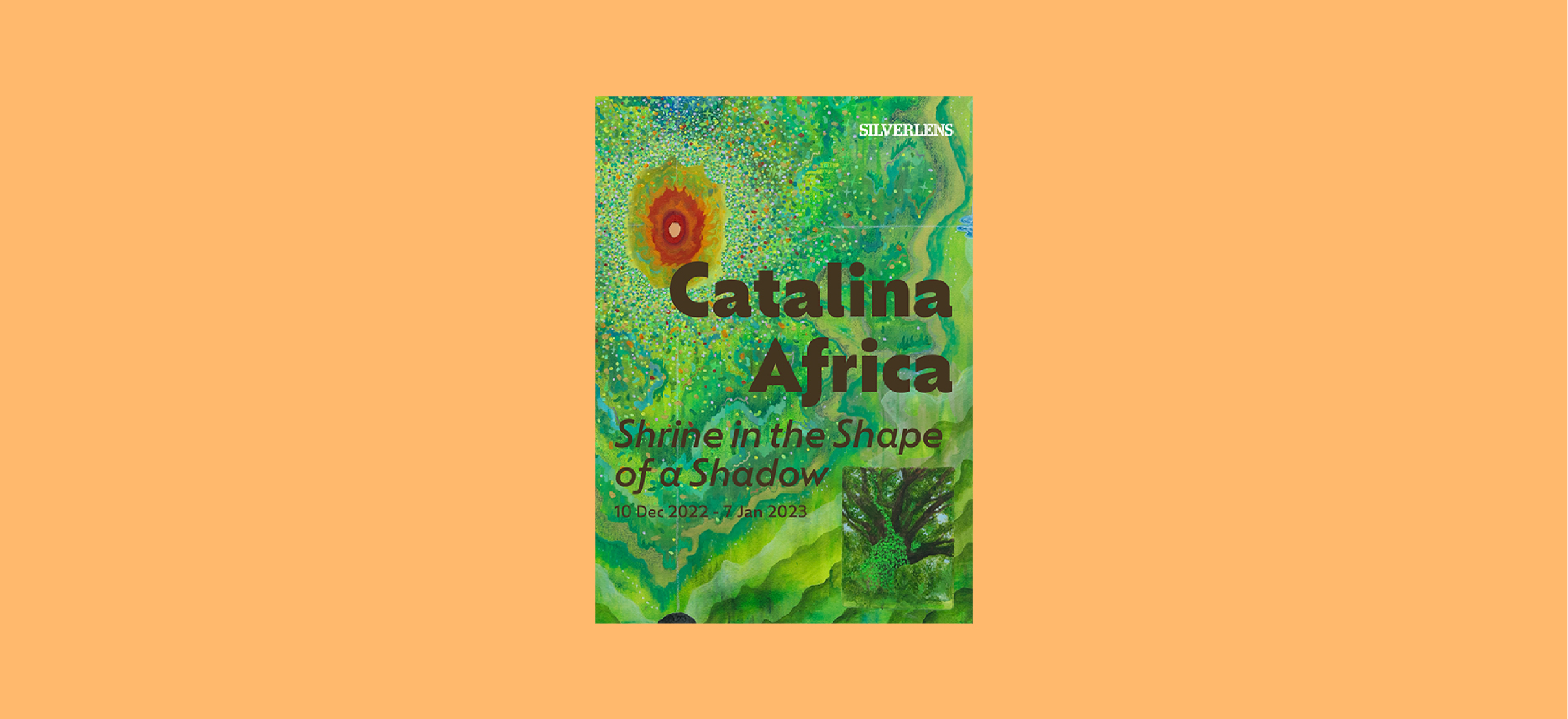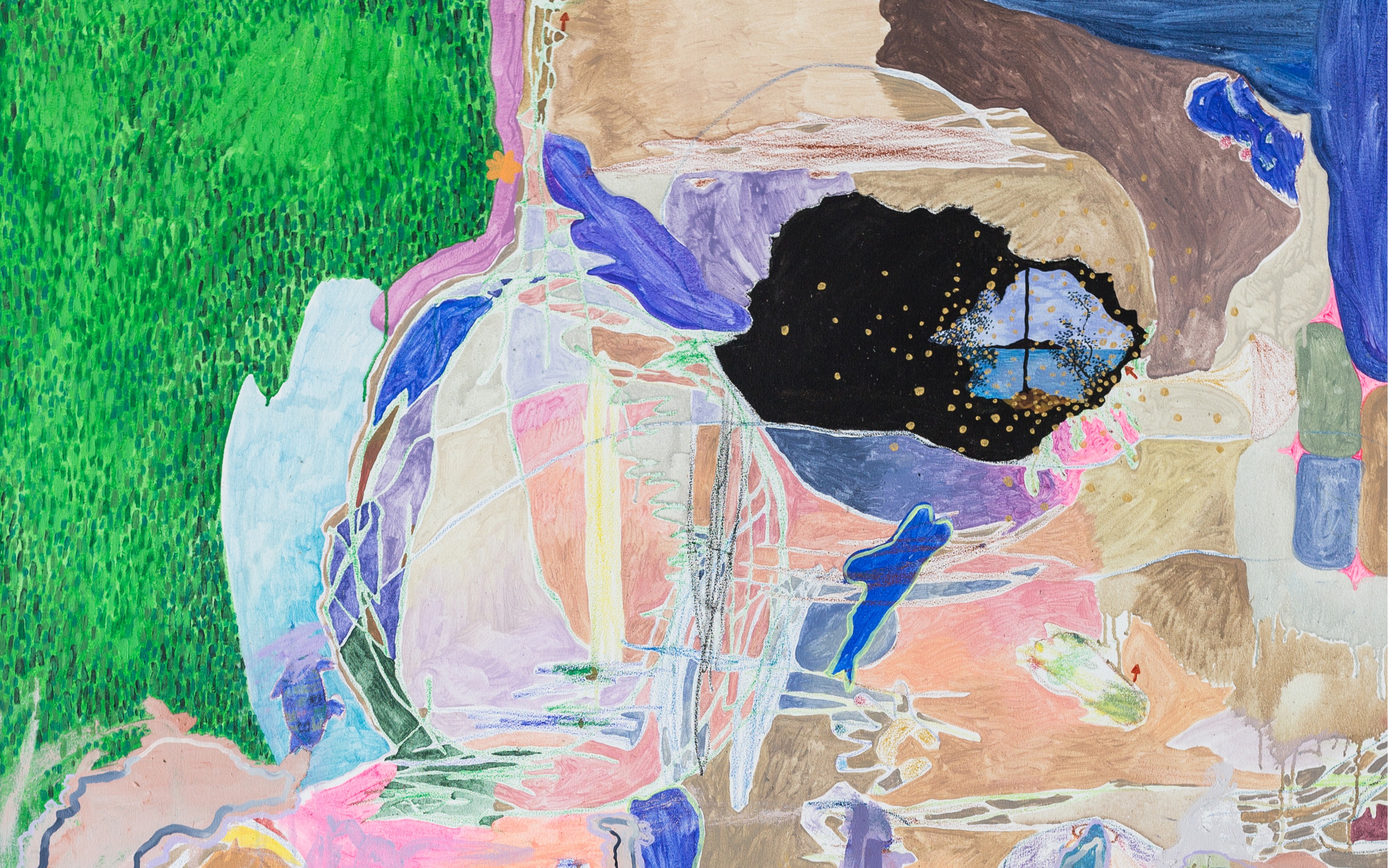
About
Catalina Africa’s new solo exhibition in Silverlens welcomes us yet again to a spatial visualization of an environment. This environment is expressed in painting and settles into a site inhabited by images painted by elemental habitation, sculptures molded by the dimensional agency of their material, and videos in collaboration with humans attuned to non-human ecologies. A shrine is a location, site. A shape denotes a contour, frame. And the shadow suggests intermediaries between the visible and the invisible, transformation.
In the last six years, Catalina’s works are frequently associated with her move to Baler, a piece of information that facilitates our perception of local architecture adapting to rocky cliffs, beachside palettes, weathered layers, and streams (whether rivers or creative consciousness). Besides place contextualizing an artist’s immediate vocabulary, it is animated by the artist’s participation in it. Shrine in the Shape of a Shadow arrived through tactility. Before images, mud was the first teacher for Catalina: its quality occurring between solidity and fluidity while simultaneously carrying these states. Mud demonstrates the feature of liminality but exists as a complete state, very much enlisting the condition of the painterly. Painterly, in the case of Catalina’s works, means an approach attendant to material, contrary to the method of conceptualizing an image before the mark. Although the exhibition finds evident application to mud as material—such as the unfired ceramics and concrete in the paintings Revealing the process of shapeshifting, participating in the processes of the earth and the sculpture Shrine in the shape of a shadow—mud as method carries forward in the paintings. The ‘in-between’ and ‘yet-to-form’ is the nuance here, and structures like paintings and sculptures carry the potential of these passages in nature.
Through Shrine in the Shape of a Shadow, Catalina reflects on how her practice can deepen an understanding of nature’s subtle actions. Edging closer to refining the routes that correspond to the world, she begins with portals to enter landscapes.
“I wanted to create a portal, and I found out I’m a portal.”
Catalina’s paintings draw us to portals: the gravitational force come from the symbols in her paintings: pools, ragged spheres, and reflective voids. These are focal points where essence is discovered to be spilling out or coalescing, as if holding the spectrum of green in Self portrait in multiple dimensions/ becoming a tree or functioning as the scaffolding for the narrative unfolding in Connecting to Core. The span of these two paintings shows the axis of Catalina’s vocabulary as they play within the visual range of becoming. So, the images invite us between the quality of these dynamic forces, and sometimes a narrative is charted among these qualities.
For instance, Self-portrait in multiple dimensions/ becoming a tree first subsumes us in green as a color. Lime, moss, seafoam, and emerald, surf around islands of blues. Painting permits this relationship between color families, extending our optic experiences of the natural world. Framed like a cross-section of a tree, this piece visualizes the animation of life’s relationship to its forms through the elemental and minute, and the ecologies of spirit that are veiled from our ocular limitations.
Visualization bridges the complex world and the human witness. Through Catalina’s paintings and sculptures, imaging perceives and dignifies this process. Portals, then, make these extra-sensory ecologies relatable through form. The suite of distinct objects on the floor for the work Revealing the process of shapeshifting, participating in the processes of the earth is like the components of a compass directing our way into such numinous sites. The heart of this map on the floor is an image of a mound, its edges shaped by the river and its slope molded by picnickers’ slips, slides, and climbs. Weathered by time, climate, and humans, this sculpture of an embankment makes up a portal as it relates to ‘deposits’ of other objects around it: things of mud from the mound itself, incense, clay, light fixtures, and a video piece.
The passage of Catalina’s perception of portal as a site makes a turn in another sculptural piece Shrine in the shape of a shadow, where she discovers herself as subject. The elusive but constant ‘shadow’ steps into a shape, carved out of wood and supported by canvas, cement and epoxy. Assembled on this opaque silhouette are materials collected and constructed by the artist, demonstrating the relationship to sediment, and offering between the natural world and its human accomplices. The subject of the shadow is essential to Catalina’s comprehension to the body as a portal to which things pass through or get carried. Considered as its own territory and landscape, shadow is like the negative space to a solid form’s density. Shadow receives change, seasons, and other inconspicuous forces that accompany mechanized living.
“I’ve been calling my paintings ‘inner landscapes’ for years, yet they resemble natural outer landscapes.”
A site is animated by one’s participation to it. Visibility is the process of visualizing the incomprehensible. Certain cartographic aspects in Catalina’s work direct us to spaces that are familiar only because these spaces inhabit within. Guided by the twin lagoons in Connecting to the Core, we are like the figure peeking from the corner of this red painting. Above this silhouette of a witness, there are currents that creep down from a flower in bloom: these roots are akin to the brain’s neural networks. The pools come with distinct densities: the one above has a slit of a portal, and the basin below is dark and voidlike, spilling texture off the edges. As strings of a harmonious tenor wrap between their reflection of each other, a thread aligns them from their centers. The charge of this womb-like space surrounds all these parts that perform autonomously.
The mirrored pools suggest the interplay of these spaces Catalina moves with—the inner and the external worlds reflecting one another synchronously. The rule of correspondence is at work in the works here: what is inside is also outside, that which moves above is activating the same way in what is underneath. That is why in Divination Dialogue (Earth has wet dreams) we encounter multiple views of place: a diagrammic landscape inhabiting spaces familiar in-situ. Delineations of strata give us an understanding that in this painting, these layers are interdependent of each other, while the totality of the image gestures towards the malleable bounds of ‘shape’ and surface. Locating these relationships, the diptych associates with recognizable geological configurations by performing contact zones between material states. Earth and wetness do not only mean land and sea. Rather, motions as depicted by image, show how spaces also elude their distinct forms. Catalina’s exhibition Shrine in the Shape of a Shadow demonstrates that painting is possible with the contingencies in nature. In-transition is complete if one engages with shapeshifting as a practice.
– Siddharta Perez, in response to the artist Catalina Africa
Catalina Africa (b. 1988, Manila) graduated from the University of the Philippines with a BFA in Painting. Active in showing with various galleries locally, she is an emerging young talent that redefines the way we look at art by way of painting, sculpture, collage and other mixed media to produce ambivalent configurations that unsettle the familiar. Africa currently lives and works in Baler.
Works
